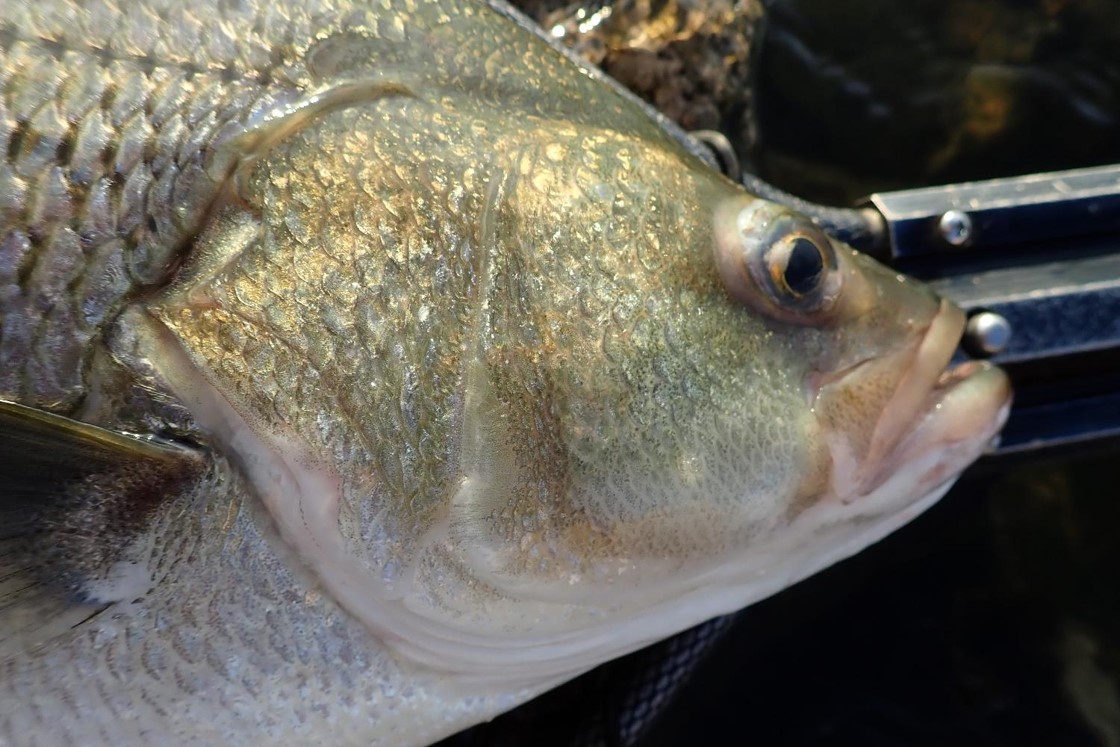
By Daryl Bauer, Fisheries Outreach Program Manager
I will almost always tell you that I would prefer to have some wind, any wind, blowing while I am fishing. Admittedly, that will depend on where I am fishing and what my target species might be. Since much of that time I am wading and pursuing large predator fish, I almost always prefer to have the wind blowing, any wind.
Last week, my schedule included appearances on several radio shows. On the air, we talked about a lot of fishy things and often stumble into a story or three. Reminded me of several stories of days with the wind and waves in my face … and usually fish on my line … .
While going to grad school, I often took advantage of free time to do some fishing. One particularly windy day, big white bass were the target. As I remember, the waves were crashing into a gradual, sandy shoreline. It seemed like the waves were so high that I was looking directly ahead, horizontally, into walls of water. Inside those walls was a school of big white bass. I could only wade in maybe up to my knees; the crest of the waves would rise nearly to the top of my chest waders. Casts could only be made a short distance into the waves. A big white bass would inhale my jig pretty much every cast.
Life was good.
Then, I quit. A car-load of girls got stuck in the sand and needed help. You know what happened. After helping them, I went back to casting and the school was gone.

If you have much experience fishing, you probably know that north winds usually accompany a weather change, a cold front. That often puts a damper on the bite. Again, however, I will tell you that any wind is better than no wind. On some waters, I know of places that are hot when a north wind pounds into structure.
Another time on a large Nebraska reservoir the wind was howling from the northwest, right down the length of the reservoir. That meant it was pounding into the southeast corner of the waterbody, right into a couple of spots that often held fish.
Wind sets up shoreline currents. Prolonged wind especially gets water moving. As that water comes to structures and shorelines, it flows along the shoreline, around structures. If you fish flowing waters, rivers, streams and canals, you know what I am talking about. You also know that fish relate to those currents and use them to hold and feed. Read the wind, read the currents; they will show where the fish will be — actively-feeding fish, very catchable fish.
The wind and waves were such on this afternoon that I put my waders on, but never even stepped into the water. The waders were necessary to stay dry from the surf and spray blowing up onto shore. Waves washed clear up to my feet.
Again, not being able to cast far, I only could toss a jig a short distance to the right spot in the shoreline current. In short order, I caught several nice wipers, white bass and one big walleye. After hooking the walleye, I turned to grab my net and discovered the waves had washed it away. Gone, never to be seen again.
“Now, what do I do?” How was I going to land a big walleye in the surf with no landing net?
About that time a big wave deposited the walleye right at the water’s edge at my feet. Just what I needed. Fish was quickly landed and released.
By the way, on another trip to that same reservoir a year or two later, I snagged and landed a landing net! Even though it would make for a more fantastic story, I cannot tell you that it was my net. It was another net, one someone else had lost. I was clear across the reservoir from where I had lost mine. However, I figured I had come out ahead. Lost a net, gained a net, caught a bunch of nice fish in the process.
Last story was another windy day on another large Nebraska reservoir. Wind was again pounding into a shoreline where my son, nephew and I could only wade a few feet off shore. The guy next to us, also wearing waders, would plow right out into the waves, clear to the point where the waves were washing over the top of his chest waders.
You know? Chest waders have a big hole right in the top.
He would cast out a line, then take his rod & reel back to the shore where he would lay it down in the sand. Then he would grab his second rod and do the same thing.
Once he got both lines in the water, he would go up the bank a ways, beyond the surf zone, flop on his back, lift his legs, feet straight up into the air, and without removing them, let the water run out of his waders.
We laughed.
Waves and sand would wash up over his reels. You know how well those reels were working; which explains why he had to wade out so far to cast. He would rinse them in the water, then lay them right in the surf to have water and sand wash over them again.
But, he was catching fish, nice wipers, and he was having the time of his life. Cast, drain, rinse and repeat.
Love it when the wind blows!

